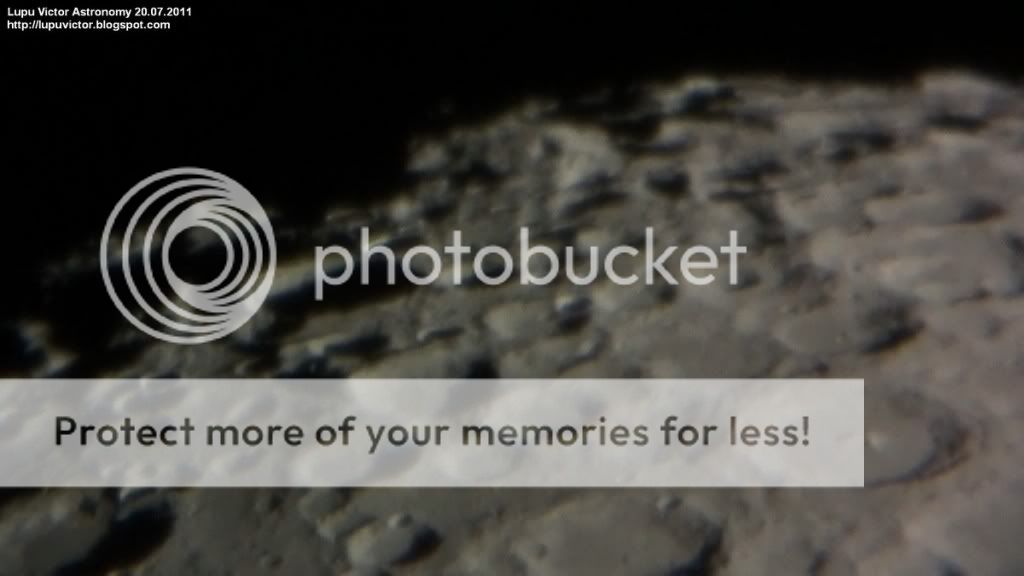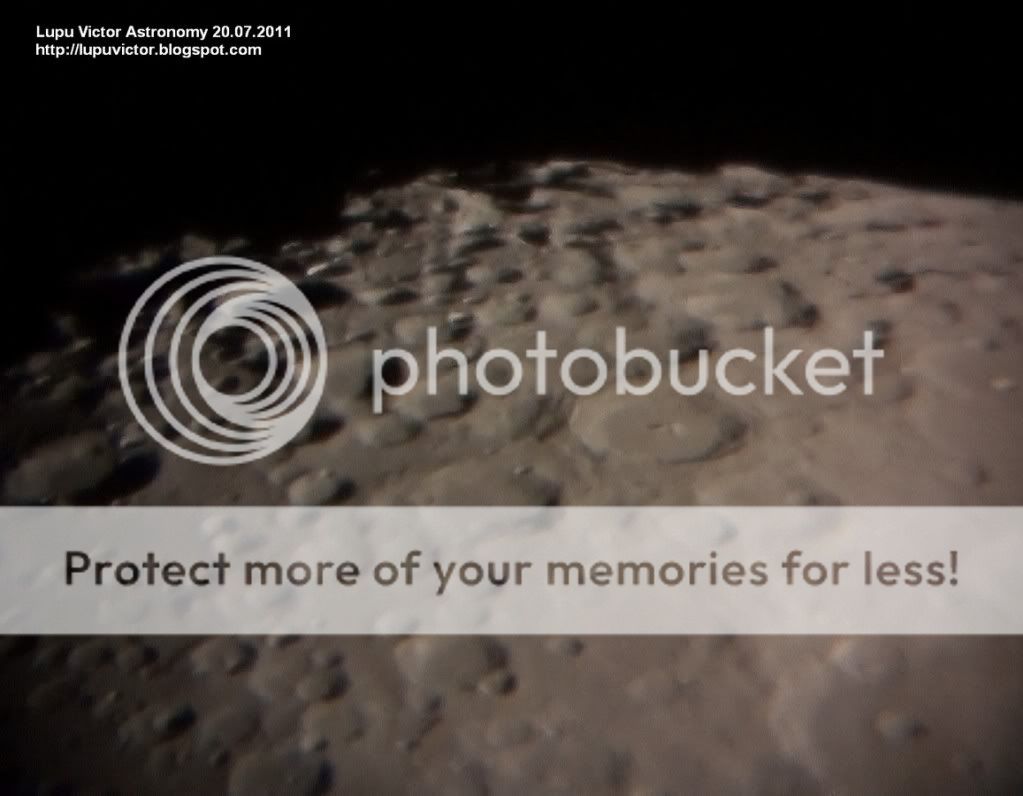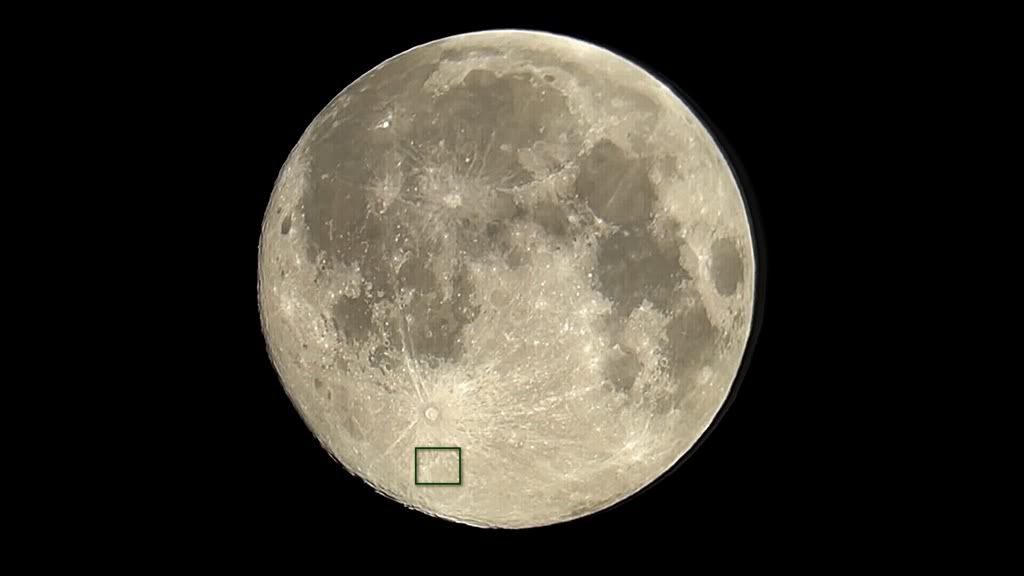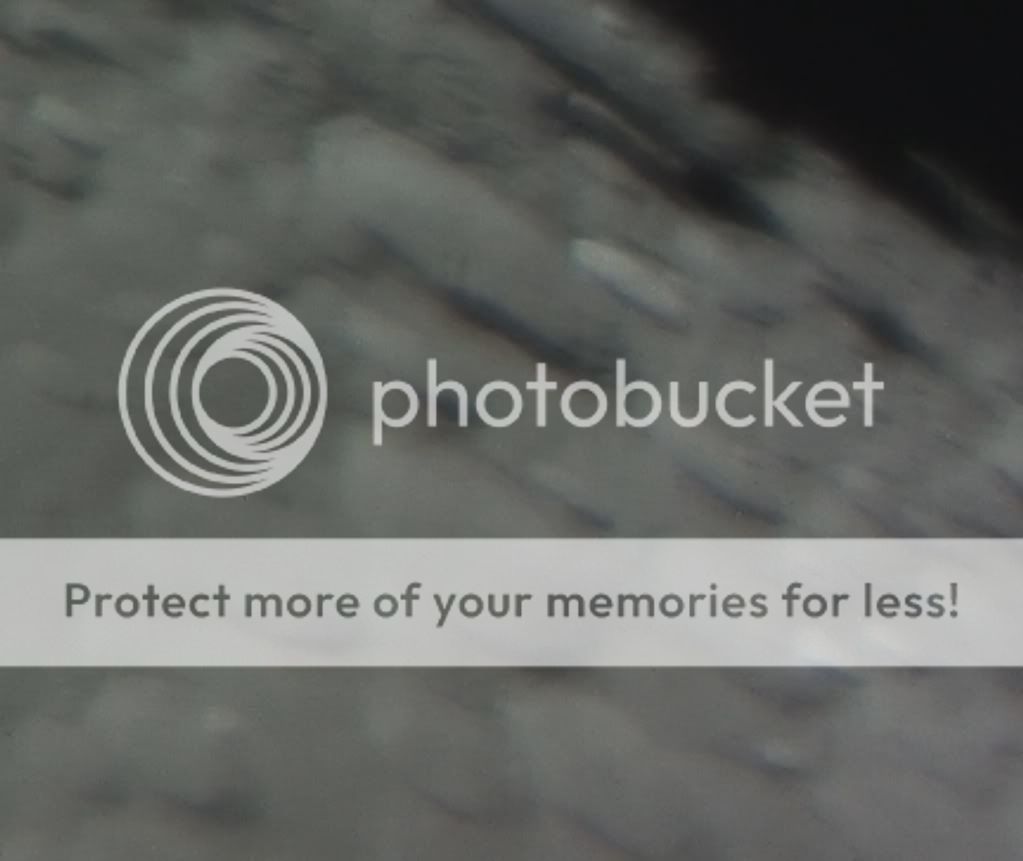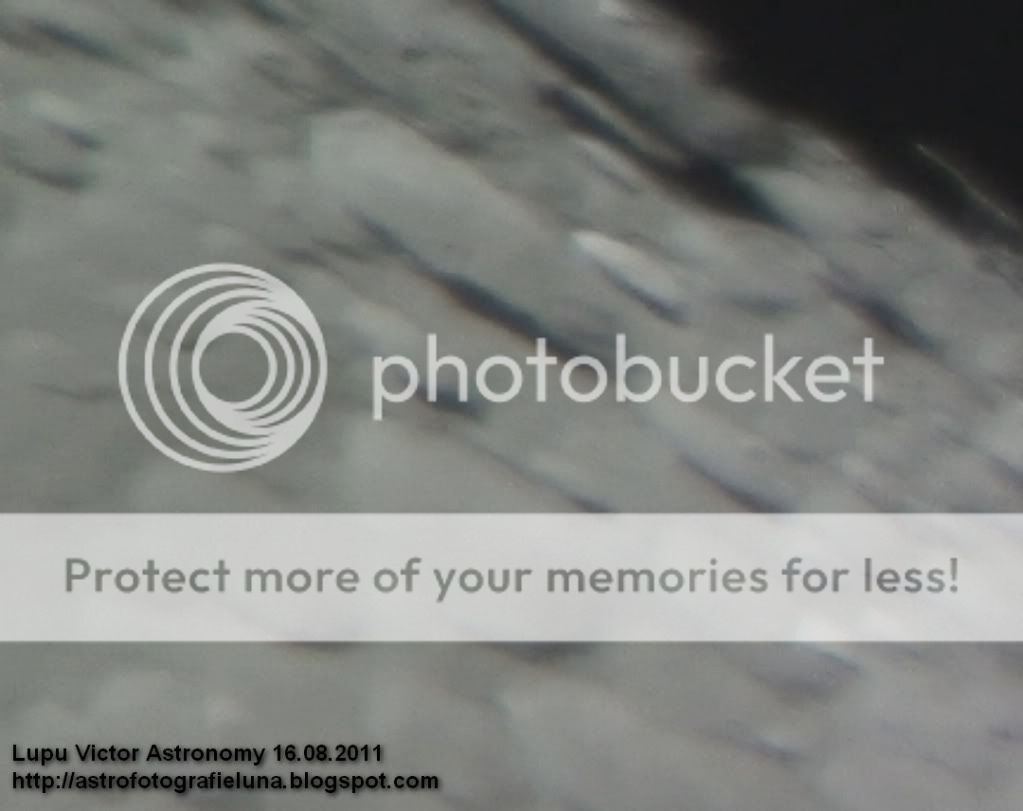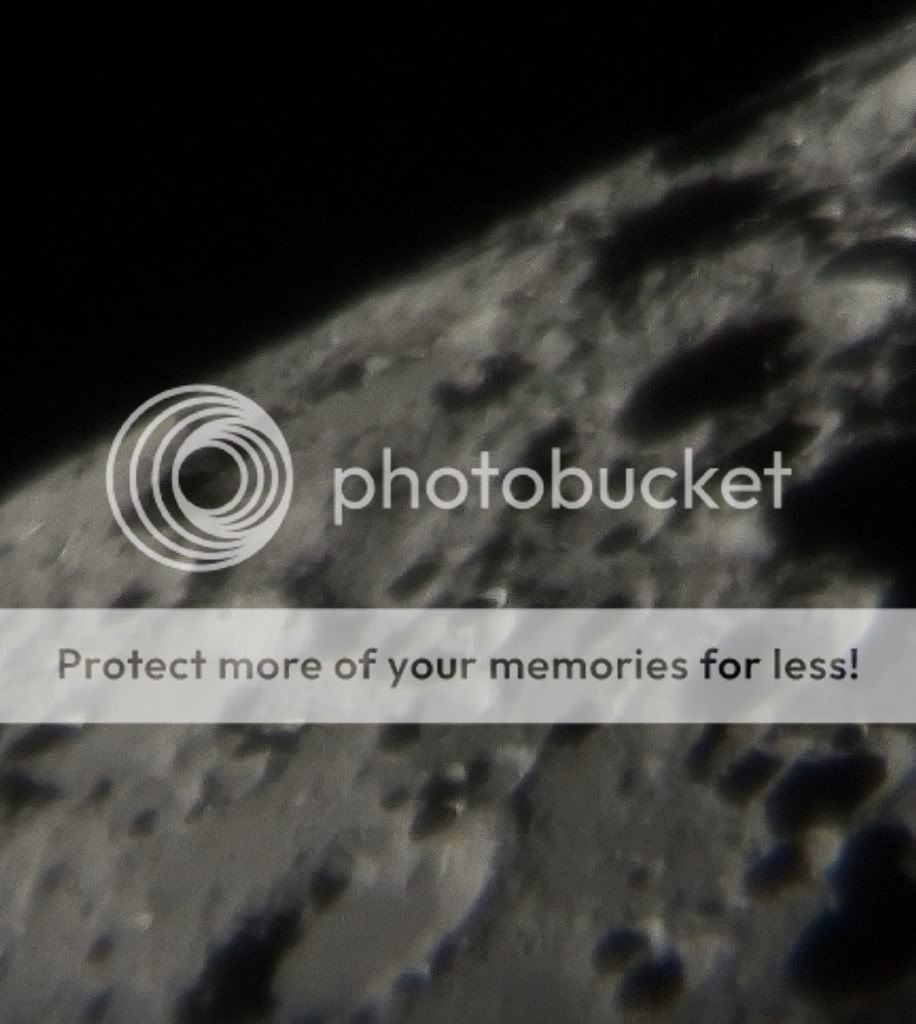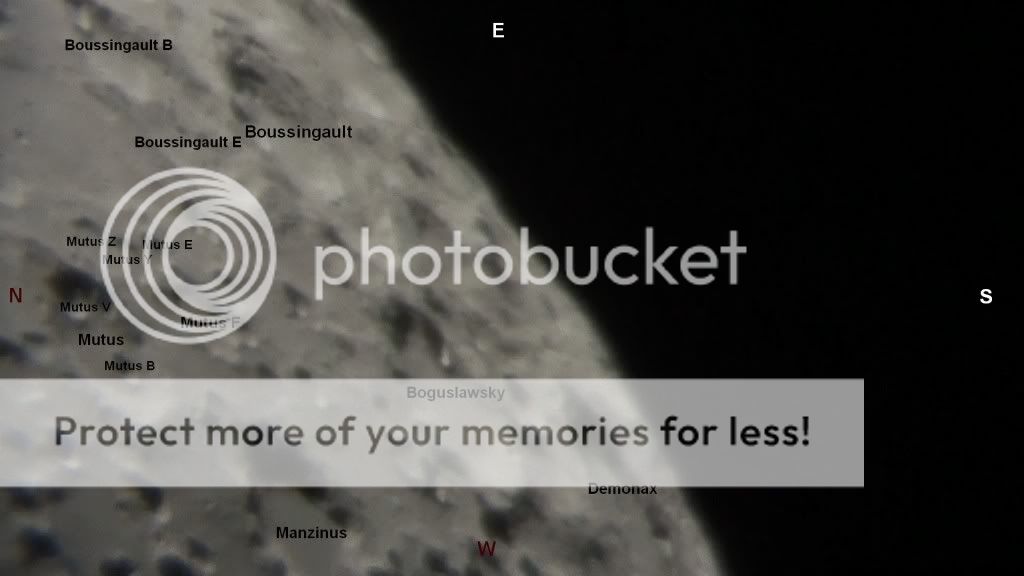These images show us the Moon's south terminal with numerous craters. Crater floor we can not study any of these images but only their outer and inner edges, because the Moon terminator does not allow it.
Schomberger (85 km) is one of them which caught my attention because it is totally in shadow and looks more orderly. It is more than a half in dark, being close to the terminator but it can be seen its western interior. However this crater we will not ever be able to see its entire floor from Earth being so close to the edge of the moon, but only partly because it is always observed at oblique angles, with an oval shape.
Other craters visible in these images are Sempilius (70 km), Pentland (56 km), Jacobi (68 km) and Kinau (42 km).
Magnitude: -10.82
Phase: 0.46
Distance: 399.283 km
Illuminated: 45.6% (0% = New, 100% = Full)
Astronomical instrument: Celestron C8-Newtonian telescope,
Eyepiece: Plossl 20mm, 2x Barlow
Mount: CG5 (EQ5)
Camera: Sony CX130
Filter: no
Date: 30.01.2012
Location: Baia Mare, Romania
Processing: FastStone Image Viewer
In the picture below are labeled craters and other lunar features in the region. To better understand this photo, you should note that the label with the name or the letter of larger craters could be found at their center, and on the small craters, you should find them around them, usually above.
Schomberger (85 km) is one of them which caught my attention because it is totally in shadow and looks more orderly. It is more than a half in dark, being close to the terminator but it can be seen its western interior. However this crater we will not ever be able to see its entire floor from Earth being so close to the edge of the moon, but only partly because it is always observed at oblique angles, with an oval shape.
Other craters visible in these images are Sempilius (70 km), Pentland (56 km), Jacobi (68 km) and Kinau (42 km).
Magnitude: -10.82
Phase: 0.46
Distance: 399.283 km
Illuminated: 45.6% (0% = New, 100% = Full)
Astronomical instrument: Celestron C8-Newtonian telescope,
Eyepiece: Plossl 20mm, 2x Barlow
Mount: CG5 (EQ5)
Camera: Sony CX130
Filter: no
Date: 30.01.2012
Location: Baia Mare, Romania
Processing: FastStone Image Viewer
In the picture below are labeled craters and other lunar features in the region. To better understand this photo, you should note that the label with the name or the letter of larger craters could be found at their center, and on the small craters, you should find them around them, usually above.
 |








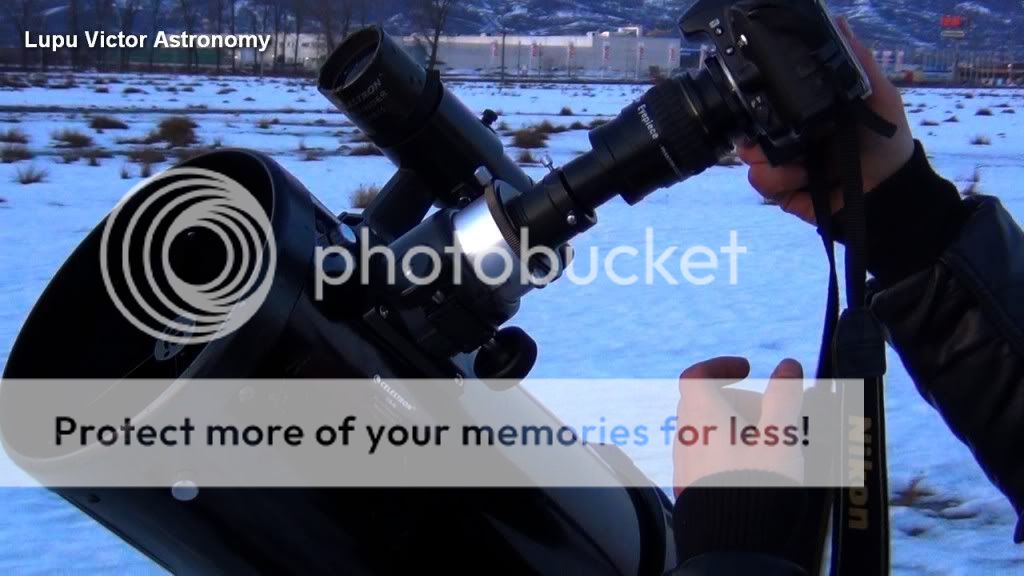

 Monday, March 07, 2016
Monday, March 07, 2016
 Unknown
Unknown







